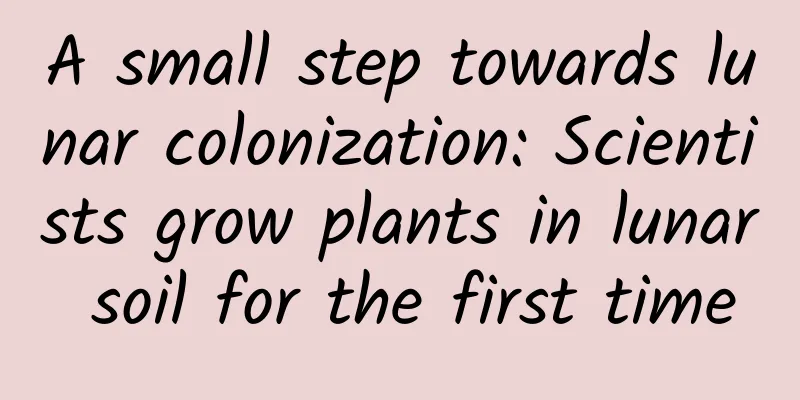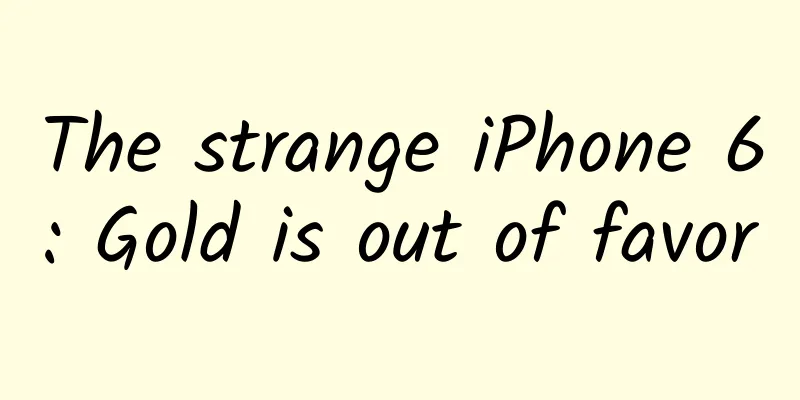A small step towards lunar colonization: Scientists grow plants in lunar soil for the first time

|
In 1969, American astronaut Neil Armstrong successfully landed on the moon, taking "a small step for him" and "a big step for mankind." Since then, although humans have never landed on the moon again, the yearning and exploration for colonizing the moon has not stopped. Figure | Artist's imagination of the Earth-like Moon (Source: Wikipedia) Scientific research has proven that humans can survive on the moon, as the moon's gravity may actually be more conducive to life than the microgravity astronauts experience on the International Space Station. Therefore, as the Earth's only natural satellite and the celestial body closest to the Earth, the Moon is considered the best candidate for humanity's first permanent exoplanet colony. However, if humans want to achieve the goal of long-term colonization on the moon, they must get rid of expensive space supply missions and have the ability to use local resources on the moon to produce the substances needed to sustain life. Now, a new study has provided new possibilities for humanity to achieve its goal of long-term lunar colonization. A research team from the University of Florida in the United States grew Arabidopsis plants in lunar soil, proving that plants can successfully germinate and grow in lunar soil. This is a first in human history and a milestone in lunar exploration and space exploration, and the first step towards growing plants and producing oxygen during future lunar or space missions. The related research paper, titled "Plants grown in Apollo lunar regolith present stress-associated transcriptomes that inform prospects for lunar exploration," was published in the scientific journal Communications Biology on May 12. "We wanted to do this experiment because for years we've been asking ourselves the question, 'Can plants grow in lunar soil?'" said Robert Ferl, one of the paper's senior authors. "The answer is yes." "Drosophila among plants" grows on lunar soil Arabidopsis thaliana, also known as mouse-ear mustard, Arabidopsis thaliana, and Arabidopsis thaliana, is a cruciferous plant like rapeseed and cabbage. Arabidopsis thaliana is widely distributed in Eurasia and northwestern Africa, and grows in Inner Mongolia, Shaanxi, Sichuan, Yunnan and other places in China. Arabidopsis thaliana has the characteristics of small plant size, fast reproduction rate, and easy cultivation in the laboratory. It is the most widely used model plant in the world and is known as the "fruit fly among plants." In this work, the research team used lunar soil from the Apollo 11, 12 and 17 lunar exploration missions. They cultured Arabidopsis plants in 12 lunar soil samples and compared growth and gene expression differences between the plants and with 16 Arabidopsis plants grown in samples of volcanic ash on Earth, which has a particle size and mineral composition similar to lunar soil. Figure | Arabidopsis growing in lunar soil (Source: Communications Biology) The results showed that while Arabidopsis could grow in lunar soil, it grew more slowly, took longer to unfold its leaves, and showed more signs of stress (stunted growth and reddish melanin) than when grown in Earth's volcanic ash, especially in soils that were more exposed to the lunar surface. Figure | On the 16th day, plants in volcanic ash (left) and plants in lunar soil (right) had obvious physiological differences (Source: Communications Biology) In addition, the team's genetic analysis of three smaller, duller-colored plants showed that more than 1,000 genes (mostly related to stress) were expressed at different levels in these plants than in plants exposed to the volcanic ash. Figure | The research team manipulates lunar soil in the laboratory (Source: Communications Biology) In addition, the research team found that plants grown in samples collected by Apollo 11 grew weaker than plants in samples collected by Apollo 12 and 17, and expressed more genes at different levels compared to plants in volcanic ash. Plants collected from Apollo 11, 12 and 17 expressed 465, 265 and 113 genes at different levels, respectively. 71% of these genes were related to stress caused by salt, metals and reactive oxygen molecules. The research team speculates that cosmic rays and solar wind have destroyed the lunar soil, and that the soil contains tiny iron particles that may induce a stress response in plants and damage their development. In the future, in order to enable plants to grow more effectively in lunar soil, the research team will need to further study the interaction between plants and lunar soil. Towards the Moon Lunar colonization is the idea of humans living permanently on the moon. In 1954, the famous science fiction writer Arthur Clarke proposed the idea of humans building a base on the moon and using inflatable components to cover the base to prevent the entry of lunar dust. Human colonization of celestial bodies beyond Earth is often a theme in science fiction. Figure|In 1986, the artist depicted the envisioned lunar base (Source: Wikipedia) With the increase of population on Earth and the advancement of technology, the topic of "space colonization" is being discussed more and more by humans. The Moon is the closest celestial body to Earth and is considered by scientists to be the best candidate for the first permanent exoplanetary colony. However, the main problem currently hindering the development of colonies is the high cost of space travel. Establishing a colony on a natural celestial body requires abundant raw materials to provide for construction and other purposes (such as shielding against radiation), and the energy required to transport materials from the moon is less than that required to transport them from the earth. Therefore, the moon is very suitable for spacecraft energy and fuel supply. Robert Ferl, one of the corresponding authors of the paper, said that in the future, if humans want to complete longer space missions, using the moon as a center or launch pad and using the existing soil on the moon to grow plants is a very reasonable choice. References: https://www.nature.com/articles/s42003-022-03334-8 https://en.wikipedia.org/wiki/Arabidopsis_thaliana https://en.wikipedia.org/wiki/Colonization_of_the_Moon |
<<: Captain Da Shanzhaowan's Notes | Deep Sea Part 2
Recommend
Which brand leverages Christmas marketing in 2017 is the most exciting?
Christmas is coming. As the most lively festival ...
The TikTok case becomes a real practice!
These two days, I suddenly found that many classm...
How can you write a good copy for the Double Ninth Festival that will be a big hit?
There are so many copywritings that take advantag...
The cold wind is howling. Each plant has its own unique way to save its life!
In order to compete for limited sunlight and wate...
Keep Fitness 43 sets of member video collection
Keep Fitness 43 sets of member video collection r...
If I make the Scissor Hand gesture towards the camera or the screen, is there a risk of my fingerprints being leaked?
In modern society, there are many occasions where...
Microsoft may add network speed test function to Bing search
Microsoft Bing is developing very well in the Uni...
Cai Wenchuan's "Photographer IP Camp, Issue 3" helps photographers increase their followers and monetize, and build their personal brands
Course Contents: Cai Wenchuan's "Photogr...
What changes will happen to your body if you eat a bowl of millet porridge every day? Is millet porridge oil really comparable to "ginseng soup"?
You have heard the saying "eat more whole gr...
If you don’t want to be “backstabbed” by your air conditioner, in addition to looking at the capacity before buying an air conditioner, you should also pay attention to this parameter!
As the summer heat arrives, all regions are enter...
Do you care about what others think?
© The Good Men Project Leviathan Press: “You will...
How much does it cost to join a specialty product app in Fuzhou?
For entrepreneurs, although mini program developm...
Why do mobile phones need power management?
Why do mobile phones need power management? Becaus...
How to plan a successful and beautiful event?
As an operator, event promotion (event operation)...









